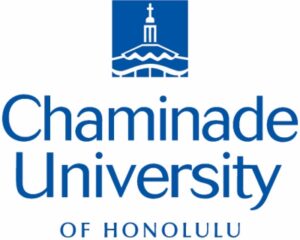Chaminade Natural Science Department Lab
Mentor: Kahoaliʻi Keahi
STEM Fields: Biology; Environmental Studies; Marine Science; Oceanography; Restoration Ecology; Biogeography
Internship Research Goal: Discover ways to restore the native limu, coral, and other native species at Kaʻalawai Beach by helping to identify & track limu species.
 About Chaminade Natural Science Department Lab
About Chaminade Natural Science Department Lab
Kahoaliʻi Keahi runs one of the only “wet labs” in Chaminade University where students can conduct field research in the marine environment. The goal of the lab is to teach students how to become good stewards of the environment using scientific inquiry.
Hawaiʻi beaches and shores are in environmental decline. There are very few fish now, and one reason for that is lack of limu. Over the past decade, invasive species have been displacing native limu, fish, and coral. Kahoaliʻi hopes to bring awareness about these issues to his students with the end goal of restoring Hawaiian fish and limu. The hope is that by restoring the native limu, the native fish will return to this area.
Thus, his lab’s primary focus is research on the limu (macro algae) on the Kaʻalawai Beach (also known as Cromwell’s) near Diamond Head in Honolulu, Hawaiʻi. Kahoaliʻi and his students are studying: (1) the types of limu species existing in this area, (2) the amount of each type of limu species in this area, and (3) changes in the limu population between seasons (e.g., winter and summer). To do this research, Kahoaliʻi and his students count and identify the communities of limu and track how they change through the seasons.
 Meet Our Internship Mentor: Kahoaliʻi Keahi
Meet Our Internship Mentor: Kahoaliʻi Keahi
Kahoaliʻi grew up in Kapahulu and on the Kalāwahine Homestead in Honolulu, Hawaiʻi. Kahoaliʻi attended various schools in the area such as Ke Kula Kaiapuni ʻo Ānuenue Hawaiian immersion school and Roosevelt High School. After high school, Kahoaliʻi attended Honolulu and Kapiolani Community Colleges and attained an associates degree. Then, he obtained a bachelor’s degree from the University of Hawaiʻi, Mānoa in Environmental Studies with a focus on limu, oceanography, and Hawaiian language and culture. After graduation, he worked as a park ranger for the Department of Land and Natural Resources before eventually moving back to teaching at Chaminade University.
At Chaminade, Kahoaliʻi works to incorporate Hawaiian language and culture into the science department and the university at large. He teaches or co-teaches several courses including Biology, Introduction to Lab, Environmental Studies, Natural Resources Management, Introduction to Ecology, and some Physics courses.
Kahoaliʻi always had an interest in limu. For generations, his family has visited Kaʻalawai Beach, propagated (grew) and harvested limu, as well as, fished. As an adult, he noticed that there were not nearly as many fish or limu in this area and sought to understand the reasons for this decline. He hopes that his research will help stop the decline of the ocean ecosystems of Hawaiʻi, as well as, discover ways to restore the native limu, coral, and other native species in this area. Kahoaliʻi also works towards offering local Hawaiʻi students, especially those who are Native Hawaiian, an opportunity to gain field research experience before graduating from college.
Internship duties and responsibilities
This internship will give students an introduction to conducting field research and working in a laboratory setting. Students will join the ongoing research project at this lab. This research project is focused on identifying limu species in Kaʻalawai. The goal of the lab is to train students to be lab technicians. Thus, students will go out, 1-2 times per week, to test water quality, collect samples, and track limu density using lab equipment. In addition, students will learn how to search for and read scientific journal articles.
Students will be in charge of preparing for at least one field day. This preparation involves making sure that the equipment is calibrated, packed, and ready to go. Then, at the end of the day, students will ensure that the equipment is cleaned and stored and that the samples are stored or analyzed.
Students will receive some training on proper lab etiquette and how to do their own research.
They will also be trained on how to use the lab equipment and on lab safety.
Note that students will not be working with acidic solutions in the lab. Mainly students will be handling seawater and limu tissue.
Interns should be able to:
- Lift 25 lbs (to carry equipment from the parking area to the shoreline)
- Swim – defined as treading water for 15-20 minutes
Note that students will be collecting samples from the water and shoreline 1-2 times per week. Students will be asked to wear reef walking shoes (or tabis) and/or reef gloves. (These safety equipment will be provided if the student does not have their own.) Students will also collect limu samples from the water. This activity will involve swimming with a life vest.
Students who select this internship should be comfortable with:
- Working outdoors on the beach and in the ocean
- Working in a laboratory setting
- Following all safety procedures for both the outdoor and laboratory setting (A safety training will be required to participate in this internship.)
- Wearing safety equipment in the ocean and in the lab
2025 Internship Schedule:
- Spring 2025: March 18th, 8:30am to 3:30pm
- Summer 2025: July 7th – July 11th, 8:30am – 3:30pm
- Internship wrap-up (Virtual): July 12th, 9 am – 1:00 pm
*Schedules are tentative and are subject to change. Interns will be required to work 8 hours in the Spring 2025. Interns will be required to work 40 hours in the Summer 2025.
Internship Meeting Locations: Students will meet at the laboratory at Chaminade University or at Kaʻalawai Beach near Diamond Head.
Chaminade University of Honolulu
School of Natural Sciences and Mathematics
Wesselkamper, Room 116
3140 Waialae Avenue
Honolulu, Hawaii 96816
Kaʻalawai Beach (Cromwell’s)
Honolulu, HI 96815
